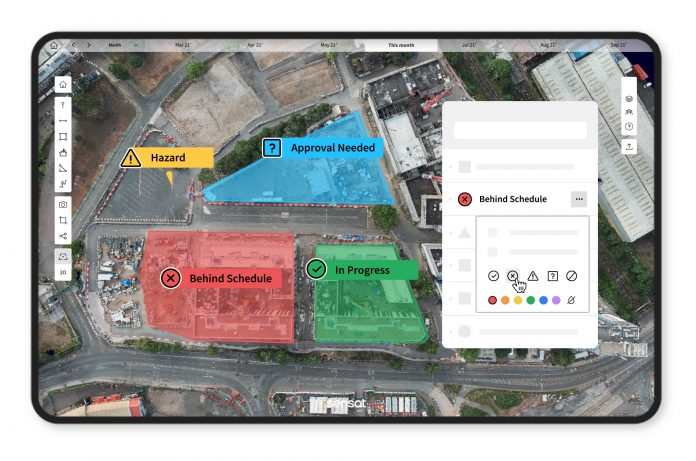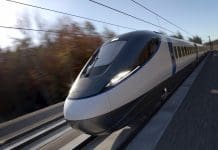4D visualisation can boost project certainty for infrastructure firms post-pandemic, says James Dean, CEO of Sensat
In any organisation, a digital transformation can be hard to achieve, but in physical sectors where digital may have taken a back seat, transformation can be even harder.
However, despite steady investment in construction tech over the last decade, spending doesn’t always translate to a transformation that succeeds at improving company performance. According to one McKinsey survey, just 16% of respondents said their organisation’s digital transformations had delivered sustainable performance improvements. It’s clear that more work needs to be done to get the right technology in place for greater long-term benefits that speak to existing systems and address the right problems.
As the world prepared to work from home in 2020, the pandemic turbo-powered widespread cloud-based communication and collaboration technology adoption to address more immediate problems. The historic deployment of remote work and digital access was hard enough for those industries already online, but for companies servicing the built environment this meant doing on-site work online for the first time in order to maintain some sort of semblance of business as usual.
For civil infrastructure firms, having a digital replica of their site was groundbreaking, and those who were able to visualise all their site information in one platform from home were able to keep their projects moving.
Digital twin
It’s unsurprising, then, that a recent research report from Sensat found that 89% of civil infrastructure sector respondents see a digital twin/visualisation platform featuring in their future purchasing amidst attempts to build better and combat the economic shock of the global pandemic. Nearly a third (27%) have already progressed implementation to become early majority adopters.
The survey signals that visualisation software is considered necessary for future infrastructure projects and a positive direction for an industry that has traditionally been reluctant to change particularly with the adoption of technology.
With the UK government recently announcing billions of pounds in infrastructure investment in the 2021 Autumn Budget to level-up transport and housing opportunities across the country, according to Chancellor Rishi Sunak, the success of public spending will be measured not by the billions we spend but by the outcomes we achieve. Only with the right tools in place – such as a visualisation platform that unlocks all your project information in one place to get a clear view of conditions, challenges and constraints – will firms be able to make informed decisions and effectively collaborate to deliver better outcomes across planning, building and managing infrastructure, to avoid wasting time, money and opportunity.
Our survey gave a sense of the perceptions that exist within the civil infrastructure industry around the benefits this type of platform can offer. Two-thirds of respondents (66%) stated site visibility to be the most important benefit of a visualisation platform to their business. 58% think accessible data is a benefit of a visualisation platform, and 55% recognised the potential for greater coordination, as well as being able to prevent risk and, by extension, costly reworks over time.
According to FMI Research, miscommunication and poor project data accounts for 48% of all rework, costing the industry over $31bn. As the current period of uncertainty around the pandemic passes, companies need a new approach to project management and process across the asset lifecycle, and investing in digital twin/visualisation technology where you can gain a clearer picture of your site or project in one place will be a game-changer for those who want coordinate their projects with certainty and communicate with teams and communities with greater context and confidence to reduce risks, as well as carbon emissions.
But what is a digital twin and what does visualisation really mean? Today, it is easy to think of digital twins vaguely in terms of powerful AI that connects the real and virtual world, or that it’s the next big thing alongside catch-all trends such as Extended Reality (XR) and metaverse – but it’s not always clear how they are being used.
In reality, as a minimum, a digital twin should offer a true replica of what’s actually happening on your physical site, represented in your digital world. But the ideal scenario would be that it’s temporally synced – utilising things like CCTV integration, weather APIs or thermal imaging – making visualisation four dimensional. You should not only be able to see what’s happening in real time but also be able to build a time record across a site and project lifecycle, and simulate scenarios that can eventually be replicated into the physical environment once they are tested and verified.
When you plug in the right data, where it’s immediately accessible to all and no longer sat in siloed systems and hard drives but instead all homogenised in a single Common Visualisation Environment® (CVE), as part of both 2D, 3D or 4D models of a site, a digital twin (or visualisation platform) can start to understand its real-world counterpart in meaningful ways.
In our research, we were keen to learn more about the types of data that are most important to users. While survey data, BIM and GIS data remained high priority, it was interesting to see that 50% of respondents also understood the need to have live data integrations with a visualisation platform and recognised the importance of having contextual, real-time data to make better decisions.
Real-time data and developments in artificial intelligence (AI) will be the tipping point for understanding what’s happening on site and how to make things more efficient. When you put the real world into a computer’s language where it can identify spatial relationships and recognise change in the physical world, computers will eventually be able to predict the future and automate workflows. This will be the future of how we plan, build and manage civil infrastructure.
Until machine learning and automation become ubiquitous, the need for a single repository for data and information about any given project, which can be visualised and easily surfaced when needed by all stakeholders, is vital if we are going to pull off an effective digital transformation that sticks post-pandemic. Only then can we unlock accurate information that leads to accomplishing work on time and on budget. A CVE is at the centre of integrated data and provides visual context of the project, allowing the project manager or contractor to make better project-related decisions by having the right data available at the right time.
Maybe a project manager or contractor will still have to interpret and validate data themselves for the time being but with more advanced in-platform functionality, such as visual recognition of objects through camera integration, thermal imaging and real-time collaboration in proof of concept (POC), the realities are just around the corner.

James Dean
CEO
Sensat
https://www.linkedin.com/company/construction-innovation-hub/
https://www.youtube.com/c/ConstructionInnovationHub














